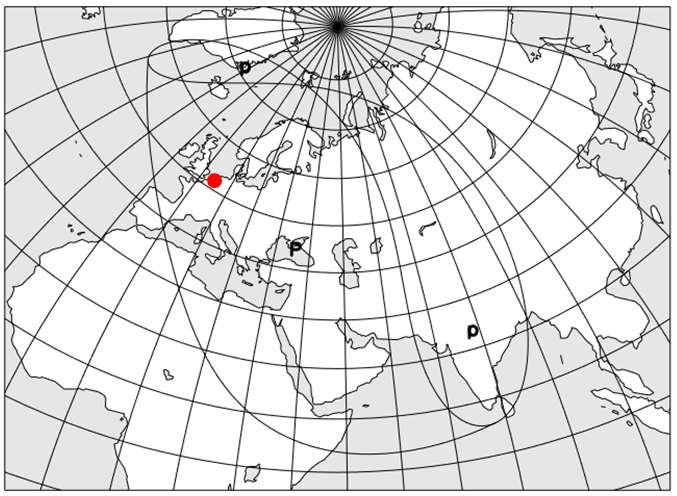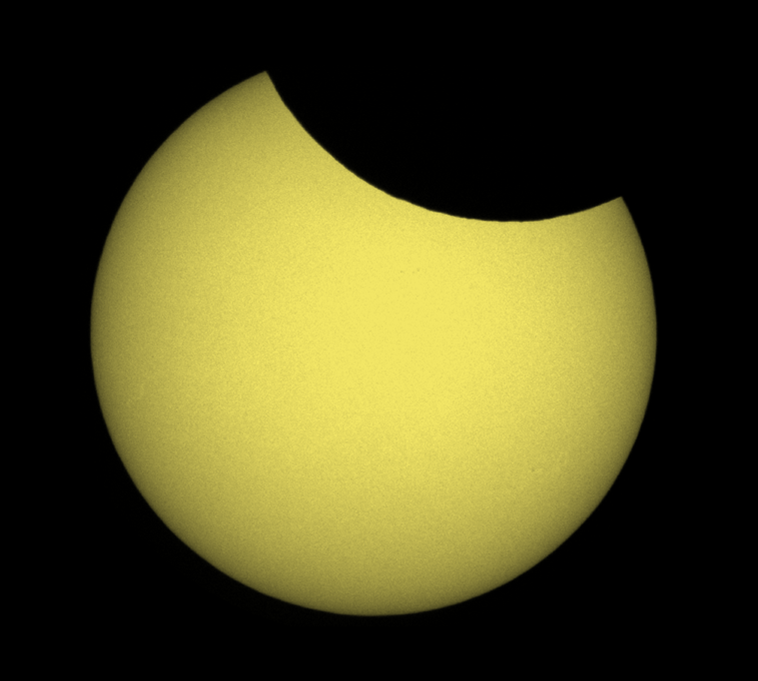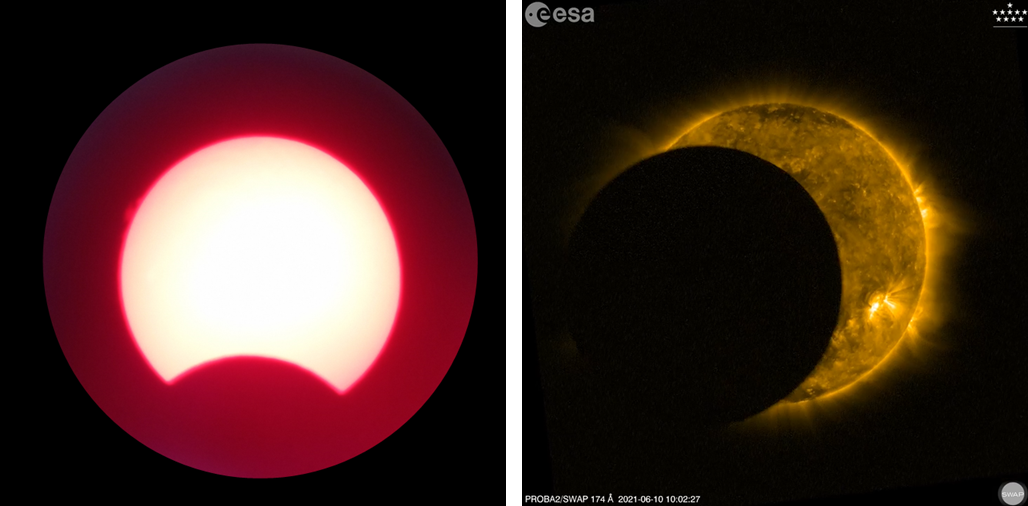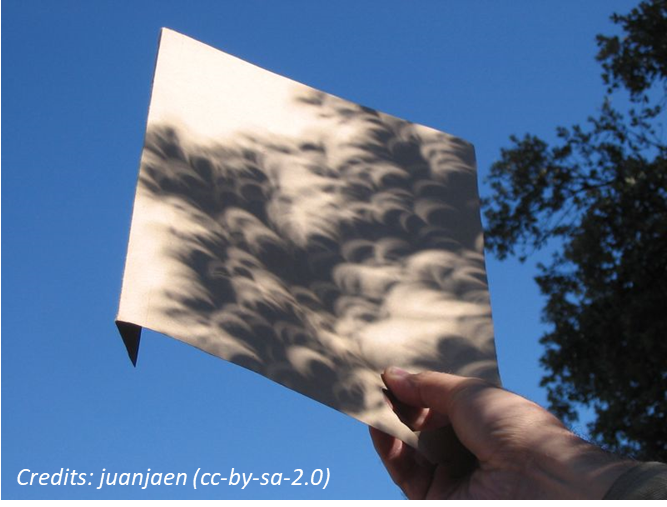On 25 October, a partial solar eclipse will be visible from most of Europe, northeast Africa, the Middle East and the western portion of Asia. In order for a solar eclipse to happen, it is required that the Moon moves right between the Sun and Earth, and thus that Sun, Moon and Earth are on a straight line. However, in this case, the alignment is not perfect. Indeed, the central axis of the Moon's shadow will be directed slightly over (to the north of) the Earth, and thus the eclipse will be partial only from each location in this eclipse area, with nowhere a total eclipse (it will not get "dark" during the day). The Moon will cover the most of the Sun's disk in Russia (86% of the solar diameter). The annotated map underneath was taken from the Yearbook of the Royal Observatory Of Belgium (ROB) and shows where the eclipse is visible. "P" means partial eclipse (fully visible), "p" also means partial, but only part of the eclipse is visible (at sunrise or sunset). The red dot marks the approximate location of Belgium.

From Belgium, the eclipse will be visible in its entirety, and will be partial everywhere. In Uccle, the eclipse will start at 11:09:34 local time (UTC + 2 hours) and end at 13:00:52, timings known respectively as "first contact" and "last contact". The maximum phase will take place at 12:04:21. At that moment, 30,1% of the Sun’s diameter will be covered by the Moon, corresponding to a coverage of about 19% of the visible surface of the Sun. This is slightly larger than the previous eclipse on 10 June 2021, when at Uccle the Moon covered only 26.3% of the apparent solar diameter. Timings and size of the eclipse will vary slightly from location to location in Belgium. For example, the eclipse will be smallest in the Westhoek (around 28.5%), and largest in Limburg (near 32,4%). Details can be found in the Yearbook or on this dedicated website. The colorized image underneath was taken by the USET telescopes in Uccle, Belgium during the previous eclipse on 10 June 2021 at 12:19 local time (maximum phase). The borderline between the Sun and the Moon is not sharp but seems somewhat irregular due to the mountains and valleys present on the atmosphereless Moon.

Solar instruments operated by the ROB will observe the eclipse. Weather permitting, the Uccle solar telescopes will take pictures in visible light ("white light"), as well as in the red and blue portion of the visible solar spectrum. The white light images show sunspots (magnetic disturbances at the solar surface), whereas solar images in the red H-alpha spectral line show prominences (near the solar limb) and solar flares. The images in the blue portion show bright regions named chromospheric plages, indicating areas of enhanced magnetic fields. High above the Earth's clouds, the SWAP camera on board the PROBA2 satellite will take pictures in extreme ultraviolet (EUV) light, showing magnetic loops and bright active regions in the corona (Sun's outer atmosphere) at temperatures near 1 million degrees. As PROBA2 orbits the Earth rapidly (about once every 100 minutes), SWAP has an ever-changing view of the eclipse. It's always fun to see which features are covered by the Moon as it transits the solar disk. The images underneath show the Sun during the eclipse of 10 June 2021 in H-alpha (through a small telescope, notice the prominence to the left), and in EUV (PROBA2/SWAP).

When observing a solar eclipse, please be careful and always (and only) use solar eclipse glasses or welding goggles. Also safe is to project the image of the Sun through a small point in cardboard on the ground, on a wall or in a box. Always look at the shadow, never to the Sun. In the past, people have been very creative to adapt this "camera obscura" or "pinhole camera" to their own possibilities. Beach hats, kitchen sieves, the punched card of a hotel room,... they all did the trick. Even the small holes between overlapping tree leaves can make the partially eclipsed Sun become visible (image underneath), though it's now already autumn and the tree foliage is thinning. The relatively small size of the eclipse is also not helping. Nonetheless, the most important is just to have some fun, because for Belgium, the next (partial) solar eclipse will only be on 29 March 2025.
The eclipse can be followed at the ROB/USET (https://www.sidc.be/uset/Eclipse2022/ ) and PROBA2 (https://proba2.sidc.be/Eclipse2022Oct25 ) websites, which provide also additional explanations.






